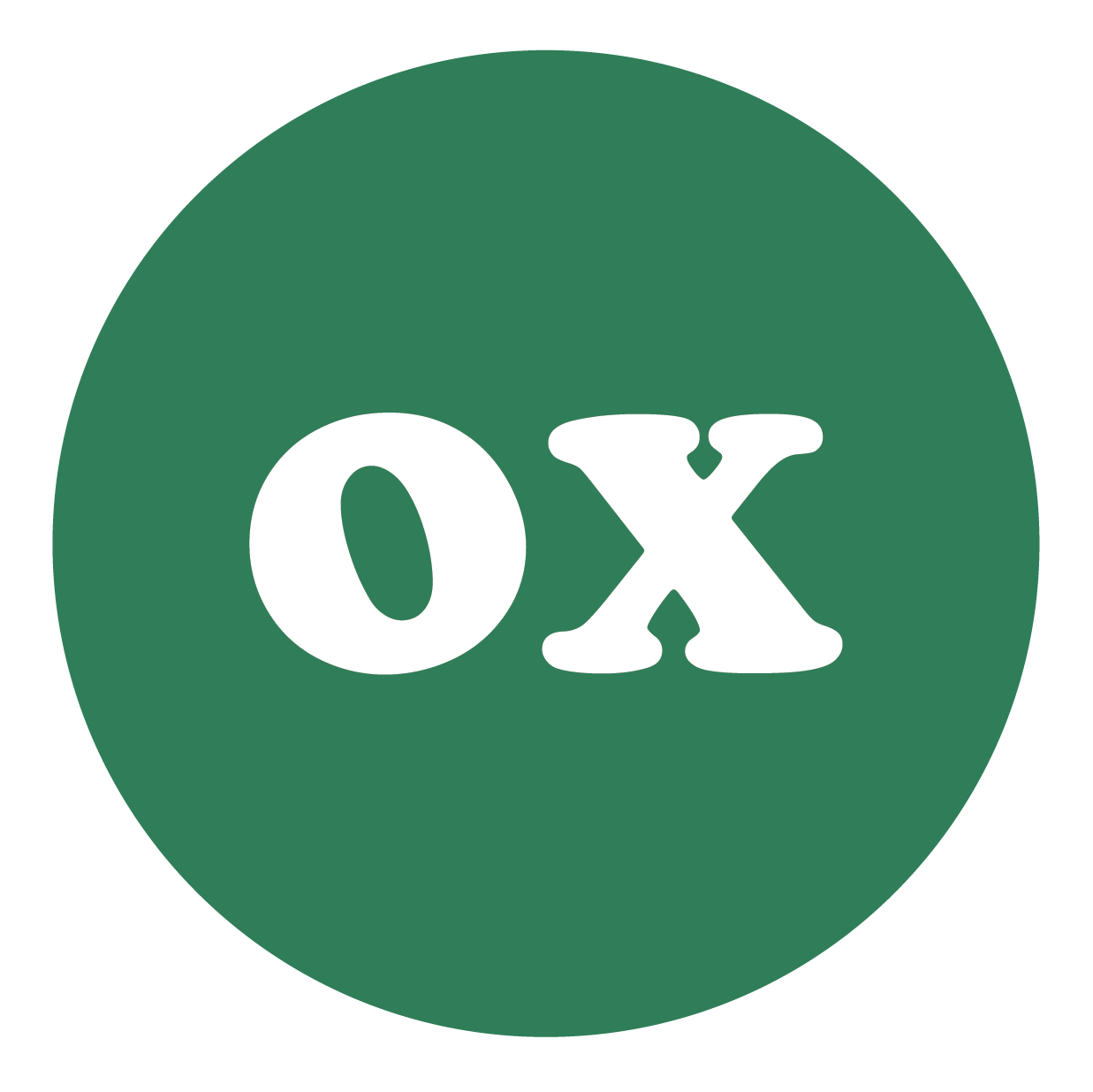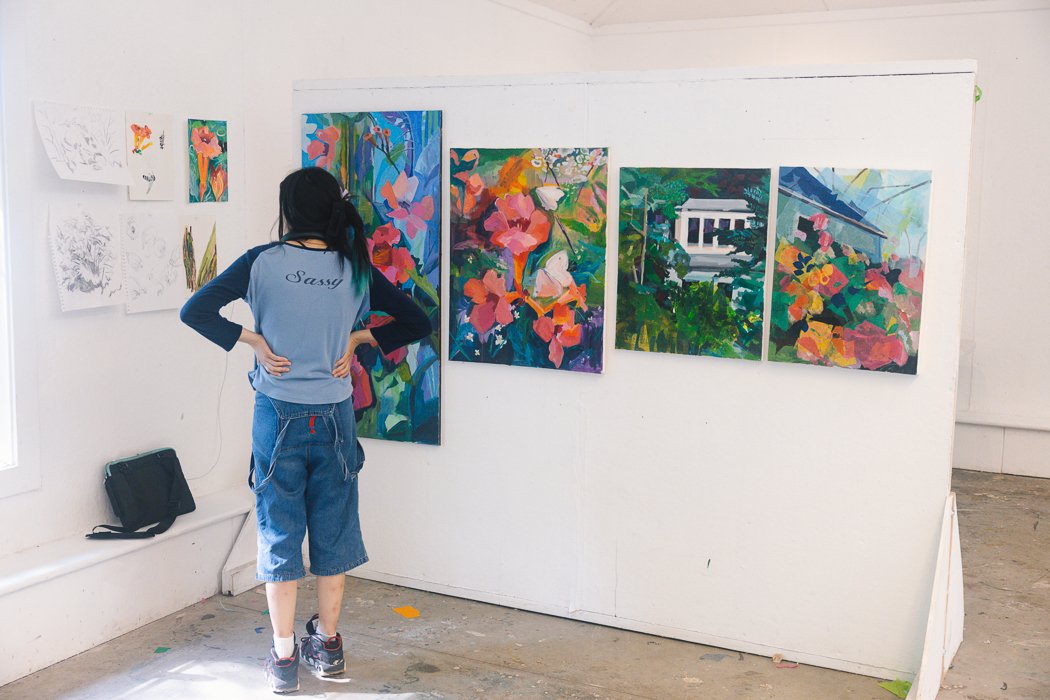Straddling the realms of science and art, Josh Dihle brings two worlds together in his course Field Illustration.
During Josh Dihle’s undergraduate studies at Middlebury College, his days were filled with lab work and science textbooks. As a biology major, he eventually landed a job that took him out of the classroom and into the riverbeds of Pennsylvania. “During the summers, I had a job for the federal government, weirdly, where I was part of a team that was counting endangered freshwater mussels,” Dihle explained. In order to land the gig, Dihle had to prove himself fluent in mussel identification. For his studies, he began sketching the different species to cement their individuality in his mind. This marked the beginning of Dihle’s slow marriage between the sciences and arts.
Dihle’s studio is now filled with sketches of feathers and caterpillars, alongside paintings that blend the natural and the surreal, and sculptures that embed the organic alongside the synthetic. His practice shows the experimental courage and intellect of a creative who has moved beyond being a mere observer of their environment. Dihle’s work reveals the spirit of an individual who is in connection and communication with the natural world. Perhaps it’s this inclination that led to his affinity for Ox-Bow.
Students of Field Illustration at work on the edge of the meadow. Photo by Dominique Muñoz.
Dihle first stepped foot on the interdunal campus as an Artist-in-Residence in 2015. At the time, he was already teaching at the School of the Art Institute of Chicago. He recalled “finding [his] stride in a really meaningful way in the studio space.” At Ox-Bow he regained an awareness for the intrinsic relationship nature had with his practice. “I was always a nature kid and somebody who loved to draw and make things and imagine. But often those get parsed into two separate camps.” At Ox-Bow, those worlds couldn't help but collide. “Being at Ox-Bow that first time, I was just out here drawing and there were bugs walking on me… There was just a union of multiple passions. A lot really clicked,” Dihle said.
Most of the memories Dihle reminisced upon were rooted in encounters with animals. Whenever he took phone calls in the parking lot he was joined by owls that swooped and hooted in the canopy of hemlock and pines. After wading into the lagoon to render a painting en plein air, he emerged with a tagalong friend… a tightly secured leach. “There was always this other kind of natural force asserting itself into the situation, which I really have come to appreciate,” shared Dihle. These anecdotes and optimism offer a clear window into an artist who can love the many faces of nature, even its blood thirsty aquatic parasites.
An artists observers work in the studio. Photo by Dominique Muñoz.
In 2021, the artist returned to teach at Ox-Bow. In line with his residency habits, he led an en plein air course. The offering was a classic on campus, allowing Dihle to join the rich legacy that sits central to the organization, which was once known as the Summer School of Painting. After a stint as the professor of this quintessential class, he started scheming up his own course. In 2024, Field Illustration made its debut. The new offering was rooted in much of the same tradition as his first course. “They're both classes that seem important in that they are a wedding of a kind of tradition of being in the environment and working from observation and just slowing yourself down and really trying to notice and see things in a different way,” said Dihle.
Student Nico Weems described the course as a beautiful chance to “be in nature up to the armpits.” The environment facilitated space both for rigorous work and play. Mornings might begin with quick improvisational sketches of the fast-footed Ox Flock. Challenging the students to keep up with the free range chickens woke up both the mind and body of the artists. “They’re not going to pose for you,” Dihle jested about the birds. While the exercise summons a loose and active spirit, Dihle insists that the practice of Field Illustration is also rooted in slowing down. Afternoons were spent in contemplation of poets such as Mary Oliver and Sharon Olds. “At Ox-Bow you can really allow yourself a different level of peace and quiet,” Dihle said, and the poets selected paired well with this philosophy. As the course progressed, Dihle’s students were encouraged to find their own aspects of nature to meditate on and capture on paper and canvas. By the end of the session, students had learned not only how to render what they saw, but to collage their renderings together into imagined scenes and landscapes.
In 2025, Field Illustration will once again be offered. Students interested in learning this niche and deeply immersive art form, can enroll starting March 31, 2025.
With a hand for detail and an eye on the natural world, Josh Dihle blends painting, carving, and drawing to open visionary portals into the heart. He is the cofounder of experimental art platforms Color Club and Barely Fair and teaches at the School of the Art Institute of Chicago. He also created The Sugar Hole, an ice cream shop staffed by puppets. Solo exhibitions include M+B (Los Angeles), Andrew Rafacz (Chicago), 4th Ward Project Space (Chicago), McAninch Arts Center (Chicago) and Valerie Carberry Gallery (Chicago). Dihle's work has been exhibited in group shows nationally and internationally, including Gaa Gallery (New York), MASSIMODECARLO Vspace (Milan, Italy), University of Maine Museum of Art (Bangor, ME), Hyde Park Art Center (Chicago), Elmhurst Art Museum (Elmhurst, Illinois), Essex Flowers Gallery (New York), Ruschman (Mexico City) and Annarumma Gallery (Naples, Italy). His work and curatorial projects have been written about in The New York Times, Chicago Tribune, New City, Artspace, The Washington Post, and The Art Newspaper, among others. Dihle lives and works in Chicago.
This article was written by Shanley Poole, Engagement Liaison & Storyteller based on an interview conducted with Josh Dihle in 2024. The article was originally published in our 2025 Summer Course Catalog. Banner images features a close up of student work from Field Illustration in 2024. Photo by Dominique Muñoz.




